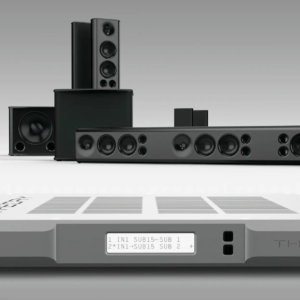As the world emerges from the COVID-19 pandemic, one lingering issue is still impacting the economy; chip shortages. Cars, washing machines, and audiovisual technology all rely on chips to do their technological magic. With factories shut down and ports at a standstill because of COVID, product lead times are beginning to impact university and corporate audiovisual installs.
The shortage of certain types of integrated circuit (IC) chips is impacting the audiovisual industry. We have seen a significant increase in lead times for these ICs, which has led to an increased demand for our spare inventory levels that are difficult to replenish due to other customers’ demands on the same supply chain. This has created challenges and possible actions for your company as well as our team members who serve you.
What is a chip shortage
Computer chip shortages happen when there are not enough chips to meet demand.
Factory shutdowns and port closures due to COVID can lead to supply chain delays for the audiovisual industry, which has a cascading impact on customers.
The shortage of certain types of integrated circuit (IC) chips is impacting the audiovisual industry. We have seen a significant increase in lead times for these ICs; this leads to an increased demand for spare inventory levels that are difficult to replenish because other customers’ demands on the same supply chain create challenges with availability.
This creates risks within your company as well as integrators when it comes time to serve you or when we need special support from one another during peak installation periods such as university orientation week.
Listen to AVWeek 506 talking about Chip Shortages
Why are AV chips in short supply
The current chip shortage is a result of both COVID-19 shutting down factories and ports. When factories and ports shut down , they can no longer produce chips.
We have seen an increase in demand for audiovisual equipment with integrated circuits (IC) such as smart TVs, digital signage players, A/V receivers or switches – all of which require ICs. With ports closed due to COVID-19 increasing demand for audiovisual products also exceeds supply availability on the market at this time creating shortages in inventory levels.
It’s important now more than ever before that your company prepares for these challenges.
What to do if your product is on back order
Consider your audiovisual partner and their ability to provide you with a spare or replacement inventory for certain ICs. Using B stock or slightly used equipment is one tactic. Remembering the final outcome, the AV experience, is what faculty, staff, and co-workers are after.
Plan ahead: If you know that there is going to be increased demand on an audiovisual component, it may be wise to order in advance and plan accordingly. This raises the question of whether we should have a “just-in-time” delivery model as this would help meet customer demands without overstocking our own warehouse facilities which could lead us both into unplanned RCA situations down the line. It also means having more flexibility when dealing with constituent needs such as installation time frames during peak periods like orientation week at universities across North America.
The chip shortages aren’t going to be solved anytime soon. Preparing yourself, your team, and your company or university will provide some much needed protection. Planning ahead and having an understanding for integrators and manufacturers will go a long way in getting all of us out of this current supply chain crisis.
Tim Albright is the founder of AVNation and is the driving force behind the AVNation network. He carries the InfoComm CTS, a B.S. from Greenville College and is pursuing an M.S. in Mass Communications from Southern Illinois University at Edwardsville. When not steering the AVNation ship, Tim has spent his career designing systems for churches both large and small, Fortune 500 companies, and education facilities.









